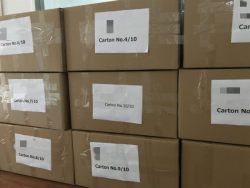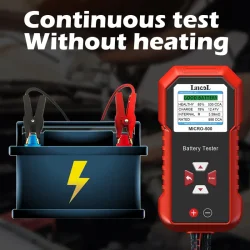Lead Acid Car Battery Maintenance(2)
2018-09-06
Battery discharge rate
Lead acid battery can be discharged either at a slow rate for long time or at a high current for a short period. For example, a 10Ah lead acid battery can be discharged at 0.1C rate and will give 1 Amps current for 10 hours. If the same battery is discharging at 1C, it gives 10 Amps current for 1 hour only. The discharge rate is linear on low loads. When the load increases, this linear relationships losses and the battery suffers internal loss of energy and heats up.
Sulphation
This is the most important factor affecting battery efficiency. The lead sulphate accumulating on the plates prevents charge release/ acceptance cycles. Usually the lead sulphate crystals will be removed during water filling and charging. So it is better to charge the battery as soon as possible to prevent sulphation. Always keep the normal water level by adding distilled water or de- ionized water. Tap water contains minerals which may alter the electrolyte chemistry.
Battery breakdown
One or more of the following reasons can cause a premature battery breakdown.
-
Self discharge- if the battery is not cycling for long period
-
Capacity loss- due to sulphation, improper charging, dry battery etc.
-
Overcharging- excessive float charge
-
Dendrite growth- formation of crystal growth on the plates
-
Sulphation- formation of lead sulphate layer on the plate
-
Grid corrosion- degradation of plate grids
-
Excess heat and water loss- overcharging with high current
Battery explosion
This is a dangerous situation due to one of the following reasons.
1. Battery Shorting
If the battery plates are shorted, the energy will be released quickly. Shock on the old battery plates break them and short each other. This causes electrolyte boiling and explosion.
2. Over charging
When the battery is overcharged, the charge voltage increases above the Gassing voltage. This causes formation of excess hydrogen. The Gassing voltage of a 12 V lead acid battery is 14.3 at room temperature. The battery voltage crosses the gassing voltage level if one or more cells are damaged or weaker. The weaker cell will charge last since its resistance is lower than the good cells. So higher voltage appears across the good cells and may increase the voltage above the gassing voltage level. The hydrogen produced due to this will recombine in the sealed batteries but sometimes escape in flooded lead acid batteries leading to fire and explosion if there is any spark.
Some Battery Tips
-
Always charge the battery with caps in space.
-
Always fill the battery with distilled water before charging. This reduces the space for the accumulation of gas.
-
Place a wet cloth over the caps before charging. This prevents the chance of fire get in to the battery if there is a shorting in the terminals.
-
Do not keep any inflammable gas or liquid near the battery.
-
The charger should be connected to the AC socket only after it is connected to the battery terminals. This prevents sparking in the terminals.
-
Do not place any metal objects over the battery to prevent terminal shorting.
-
Always disconnect the negative terminal first.
-
Rock the charger clips to the terminals to remove any corroded material. If there is any corroded material, it may creates high resistance that results in terminal heating or reduce the flow of charge.
-
Do not use Bangles or Metal wearing when handling the battery charger. A shorting can burn your hands.
-
Always use a Transformer based charger. Remove the clips only after removing the AC plug.





